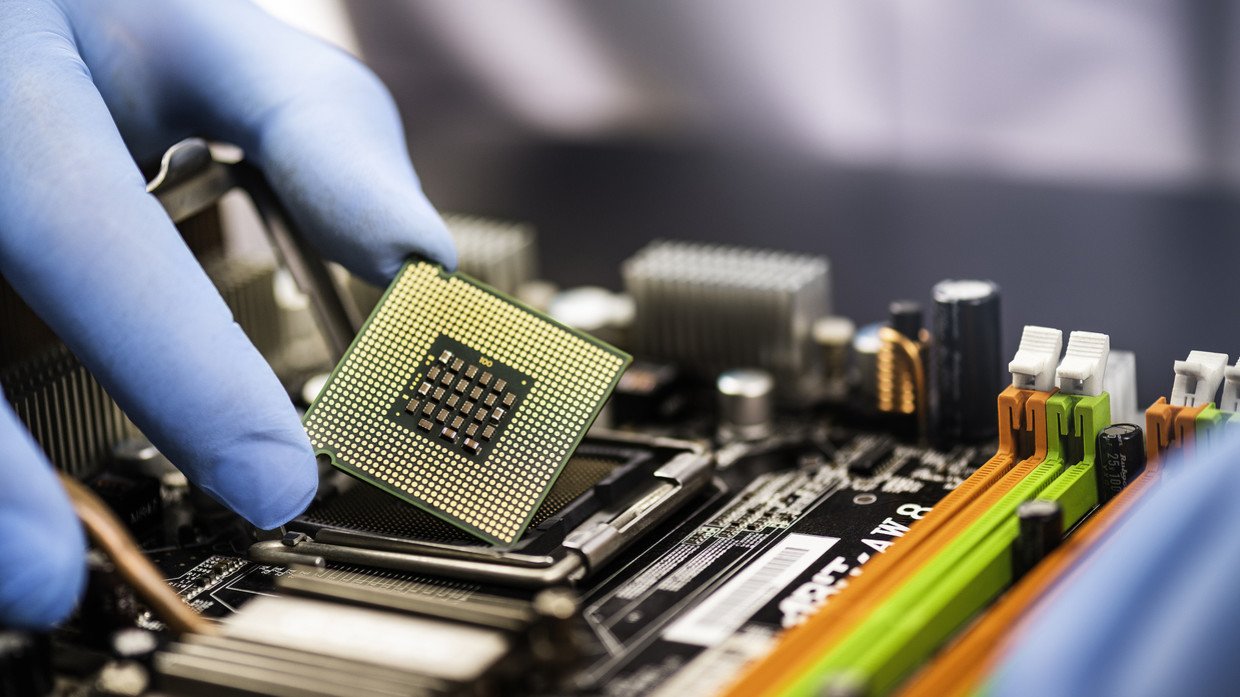America’s latest move to try to contain Beijing is to weaponise an entire industry. By leveraging its patents and licences for semiconductor manufacture, it is attempting to deny China access to crucial technology.
Taiwan Semiconductor Manufacturing Corp (TSMC) is the world’s leading chip manufacturer and the shining star of the island’s economy. But it has a problem – it’s located right in the middle of one of the world’s geopolitical flashpoints, with the future of Taiwan itself at the heart of that.
Geography and access to markets matter, of course, and one of its main customers is the very nation sitting on the other side of the strait, China. But its biggest provider of patents in the supply-chain process is the United States, which now appears to be determined to forcibly weaponise the entire industry for its own political gain against Beijing.
The Biden administration is demanding that TSMC hand over sensitive data on all of its customers to the US government, for the unstated yet obvious reason that it wants to see who in China the firm is selling to.
It’s a blatant coercive violation of national sovereignty and corporate privacy, but Taiwan has absolutely no leverage over the US, because politically it has aligned itself completely with Washington. America has effectively learned it can leverage the entire semiconductor supply chain to do what it wants, with an eye to global domination of it.
And so it was no surprise when it was widely reported in late October that TSMC is prepared to capitulate and agree to the move, which speaks volumes about the environment we are now in.
The semiconductor has emerged as one of the most strategic commodities in the world, or least that’s how Washington sees it. These tiny components are required to power high-end technology and military devices – a crucial factor in the global balance of power.
Also on rt.com Semiconductor chip shortage could extend through 2022The US does not currently dominate the production of semiconductors, but is abundant in knowledge and patents, linking together a global supply chain in which the most renowned producers are South Korea, Japan and Taiwan.
In a way, the US’ role constitutes the bottom layer of a pyramid, which props up the increasingly smaller and sophisticated layers building upwards. It’s an industry that ultimately derived from American technological breakthroughs; licenses were then issued to friendly countries to build their own industries, and they have subsequently built products which are exported globally and used in devices such as laptops, tablets, smartphones and more.
However, in recent years the US has started to fear change in this sector, and become more anxious that China may emerge as a global producer of high-end semiconductors, overturning the established market order America has built and, in the process, developing tech with the potential to gut its leading industries.
It now appears that globalisation is being actively rolled back in this new environment of geopolitical competition, with US foreign policy weaponising the semiconductor industry and supply chain, in a way that has never been done before, in order to effectively assert political sovereignty over foreign magnates it does not own and to make them do its bidding. This is all aimed at containing China.
The goal is to effectively embargo the export of high-end semiconductor parts to China’s strategic industries in order hold back its technological development, forcing Beijing to pursue a breakneck race to self-sufficiency.
This technological war is being pursued by a number of means. First and most frequently, hundreds of Chinese companies have been added to the Entity List maintained by the US Department of Commerce, which bans US companies from exporting sensitive components to them without a government licence. While compromises can be made – as was reported last week – these tend to be for lower-end non-critical technologies, such as automobile chips, or 4G ones instead of 5G.
Huawei has been subjected to a more rigorous interpretation of this in the form of the ‘Direct Foreign Product Rule.’ This means that foreign semiconductor companies are not allowed to use direct US patents in exporting to the company – it doesn’t matter where or who they are.
Also on rt.com Alibaba’s value plummets by over $340 billion as China cracks down on tech monopoliesThis is a long-arm act of jurisdiction which has seen the company cut off completely from the supply of foreign semiconductors, illustrating America’s power in this field. But the US has gone even further than this, weaponising patents it owns in various semiconductor and lithography companies to block sales to China when it has no business doing so.
When a South Korean chip company called Magnachip was sold to a Chinese firm earlier this year, the US committee on foreign investment blocked the deal. The same happened when Dutch firm ASML sold an ultraviolet lithography machine to China – the US government prevented it. Even if only 10% of a product uses US origin tools, then Washington claims for itself the legal right to kill it, and this is why foreign semiconductor firms, including TSMC and Samsung, have had to invest in chip plants in the US, or in other countries of strategic importance, like Japan.
What we are seeing here is how the state is wielding governmental power over an industry which is now more political than it is commercial. By forcing TSMC and others to hand over data, the US wants to exert even greater control over their business. The irony of this is that the American government has demanded that other countries ban Chinese technology firms on unfounded accusations they do the same thing. TSMC has been hollowed out into a puppet company which answers to Washington and not Taipei, as the US pulls strings over an entire supply chain.
China now faces the mammoth task of investing in an entire semiconductor supply chain of its own. And this isn’t to dominate world markets – it’s necessary for its own economic development. China’s own demand for semiconductors is swelling and it is the largest market in the world, but that alone constitutes an enormous strategic weakness which the US government can use to exert leverage over it.
Also on rt.com Apple cutting iPhone Christmas production by 10 million units due to chip shortage – mediaAs a result, Beijing is investing hundreds of billions in research and development, as well as expanding capacity in the race to make chips of its own. Ultimately, America’s weaponization of the supply chain means China has to create a new ‘pyramid,’ one which is not built on someone else’s foundations, but on its own. It is making some progress building from the bottom in lower nodes, but much more is needed.
In a world of geopolitical competition, the US is effectively exerting control over an entire industry, with disastrous consequences for everyone involved, breaking up a global market into politicised blocs. And Taiwan has found this out to its cost. Having placed all its bets on America for support, in the end it has found it doesn’t even have sovereignty over its most important economic asset.
Like this story? Share it with a friend!
The statements, views and opinions expressed in this column are solely those of the author and do not necessarily represent those of RT.


